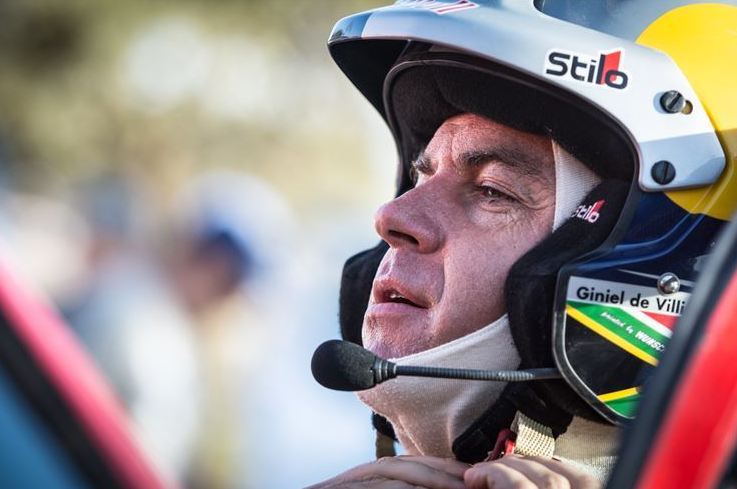JUJUY, ARGENTINA – Toyota Gazoo Racing SA’s Giniel de Villiers and navigator Dirk von Zitzewitz pushed hard on Stage 3 of Dakar 2016, to move into second place in the overall standings. The stage, which took place on January 5th, saw the crews relocate from Termas de Río Hondo to the town of Jujuy, in the north of Argentina. Heavy weather again played a role, but for De Villiers/Von Zitzewitz (#301), it was a mostly clear run.
“We had a slow puncture about 30 km from the finish,” explained De Villiers at the end of the stage. “We decided not to change it and pushed on, but we lost around 25 seconds as a result. The tyre was fully deflated about 10 km from the end, which kept us quite busy. If not for that, we would have finished third on the stage.”
As it turned out, De Villiers’ time was good enough for fourth on Stage 3, 02:02 behind stage winner Sebastien Loeb (Peugeot).
For Leeroy Poulter and navigator Rob Howie (#319), the stage started with a bang. The pair were second-fastest to the first checkpoint, trailing Loeb by only four seconds. But then the heavens opened mid-stage, and with their eyes on the long-game, they eased off a little as a precaution. After 190 km of racing, Poulter/Howie posted the 7th-fastest time on the stage, 03:03 behind the stage winner. This meant a drop of one position, from fifth to sixth in the overall standings.
Meanwhile, Yazeed al Rajhi and navigator Timo Gottschalk started Stage three in 13th place, having been penalised by five minutes for speeding in a restricted zone during Stage 2. The pair drove a steady stage to improve their overall position to ninth, posting a time 04:54 down on the stage winner.
It was, however, a fantastic stage for South Africa’s Brian Baragwanath. The quad rider won Stage 3 of Dakar 2016 by four seconds, after finishing second on Stage 2. He is still in second overall, but has clearly established himself as a strong contender in this year’s race.
The race continues its northward march to Bolivia tomorrow, with the so-called marathon stage taking place to the north of Jujuy. The 429 km-long Stage 4 will have to be completed without any service or assistance from the team overnight, effectively forcing crews to complete two full Dakar stages on the trot, without the benefit of service in between.
“This is obviously a time of high pressure for us,” explained Team Principal Glyn Hall from the bivouac at Jujuy. “Thankfully the Toyota Hilux has proven extremely reliable in the past, but even so we aren’t taking any chances and it will be a long night for the team as we prepare for the Marathon.”
The lack of service, however, won’t be the only worry for Stage 4. It is also the first of a number of stages at high altitudes, and while the 4,050 m maximum altitude of Stage 4 won’t be as high as those on the Bolivian stages that follow, it will certainly have an influence on the performance of the normally aspirated V8 petrol engines powering the three Toyota Gazoo Racing SA Hilux race vehicles.
After completing the marathon stage, the crews will remain in Jujuy overnight, before crossing the border to Bolivia prior to the start of Stage 5. This will mark the start of three Bolivian stages, before the Dakar returns to the Argentine city of Salta for the rest day. The race ends on January 16th, in the city of Rosario.
